As a Mexican-Jewish witch, Gabriela Herstik defines identity with magick, fashion, and writing

After admiring her shaved hairstyle and nearly neon eyeshadow during our first meeting months ago, I learned that Gabriela Herstik and I have a shared experience: We both know what it’s like to have an undying connection to our Jewishness as a culture and ethnicity — not to Judaism, our inherited religion. But Gabriela’s coming-of-age as a Jewish woman was quite different from mine. Raised in the Deep South, she is a Mexican Jew and the daughter of a rabbi. And while preparing for her Bat Mitzvah, a 12-year-old Gabriela realized she was a witch.
These intersecting identities — first generation American, Latina, Jewish, witch — have shaped her writing career. I met Gabriela when she joined our editorial team at HelloGiggles as a Latinx culture writer. Before starting at HG, she had already been publishing her monthly NYLON column, “Ask a Witch,” where she answers reader questions about spirituality, sexuality, and more. Her first book, Craft: How to Be a Modern Witch, will be released by Ebury Press in March 2018.
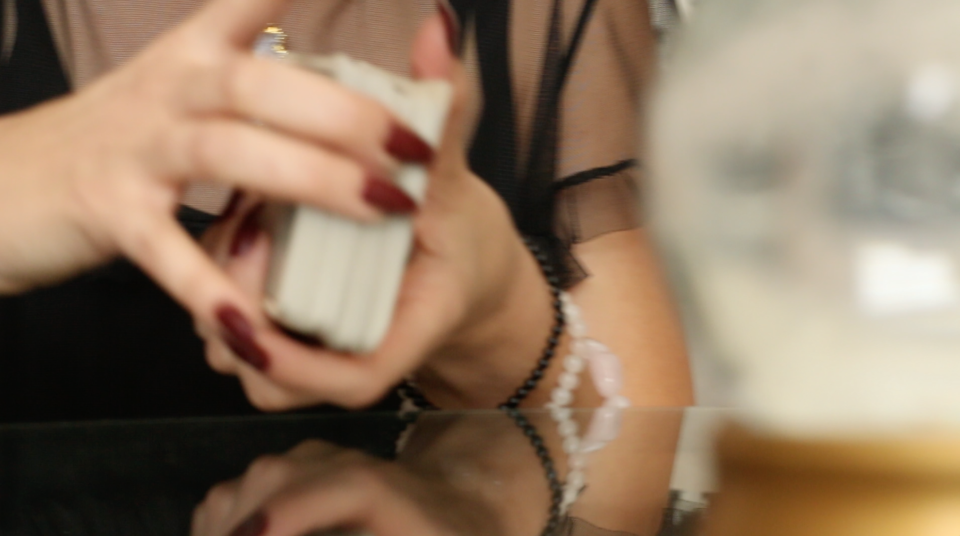
Last week, Gabriela and I stuck around the HG office until after the workday’s end. Stepping away from our desks (both covered in stacks of books, potted plants, and cups of coffee), and surrounded by a cinematic view of the Downtown Los Angeles skyline, we talked.
“I figured out the phrase: I’m too Mexican for the Jews and too Jewish for the Mexicans,” she told me. “I’m first generation American to an an Israeli father and a Mexican mother. Ethnically, I’m Jewish as fuck.”
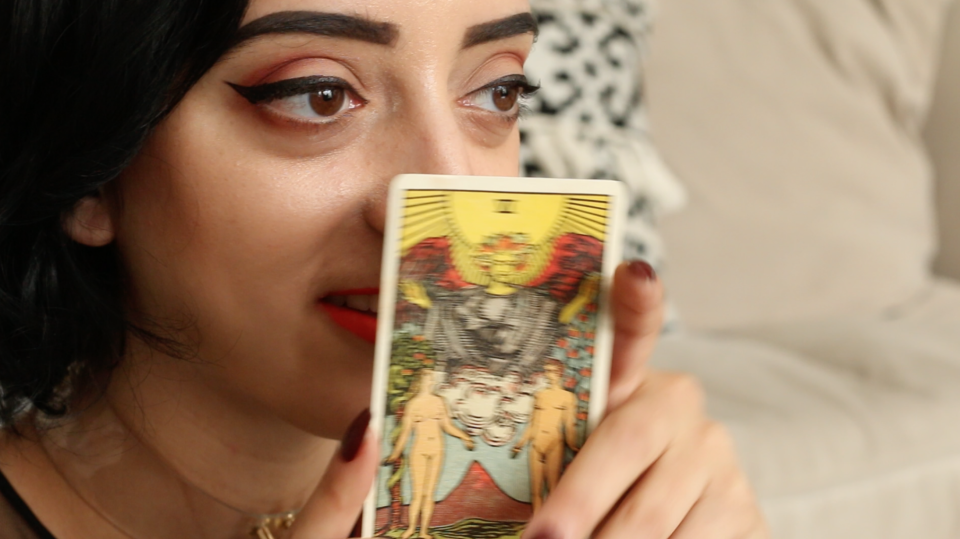
Gabriela feels like an outsider in both cultures. Her maternal great-grandparents migrated to Mexico from Poland to escape the Nazis, and Mexico City is the birthplace of her grandmother and mother. There, her mom grew up in an incredibly tight-knit Jewish community.
“I’m culturally Mexican. I grew up going to Mexico, I grew up eating Mexican food every night, speaking Spanish, visiting Mexico every year. And for our Shabbat dinners, it’s ceviche and matzah ball soup. I just realized that [my mom speaks Yiddish with] a Spanish accent.”
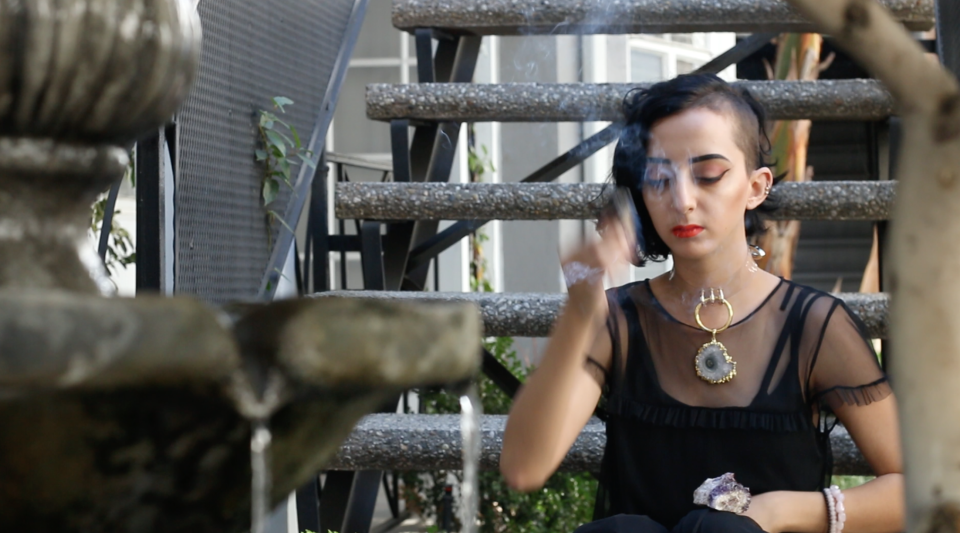
Having grown up practicing Judaism as the daughter of a rabbi (at a temple with one of the largest Sunday Schools in Atlanta, Georgia), Gabriela’s relationship with her Jewishness and Latinidad is constantly evolving. “I feel like I should be more tied to my Jewish side, but I’ve always felt such a pull to Mexico,” she said. “The energy there is just part of who I am. And I never understood my dad when I’d ask him what we were. He would always say, ‘Jewish.’ And I’d respond, ‘That’s a religion; I don’t get it.’ And now, I realize that you can literally look at our blood and know that we’re Jewish — it’s an ethnicity.”
Gabriela and I discuss how that very fact — that our Jewishness is in our blood — is why we will always include it as part of our identities, no matter how we feel about religion. As she puts it, if you’re Jewish, you can’t ever not be Jewish. But her ethnicity has also led to some of her Latinx identity struggles, since her earlier ancestry is Eastern European.
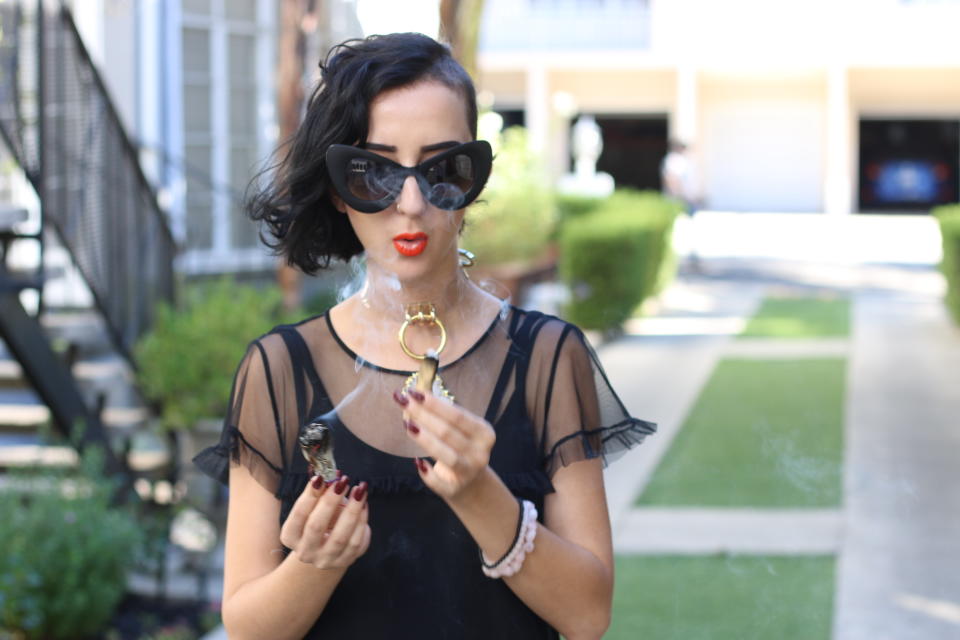
“I’m not ethnically Mexican. I’m culturally Mexican. I’ve always felt in-between,” she says. “I still struggle with finding my identity as a woman who feels very connected to her Latin side, but isn’t [ethnically Mexican]…it’s weird.”
The role of identity is evident in just a quick skim of Gabriela’s work as a writer. Beyond her reporting on Latinx culture and issues, she delves into how fashion informs her sense of self, and how her spirituality as a witch helps her find protection in the world.
I asked Gabriela what it was like to tell her rabbi father that she is a witch — and that it wasn’t a youthful phase (as her parents had assumed). I was surprised when she said that, actually, her father had an easier time with it than her mother. In general, Gabriela says that her mother has more conservative reactions to bolder parts of her identity (like her shaved head) — which she considers a byproduct of her mom’s Mexican culture.
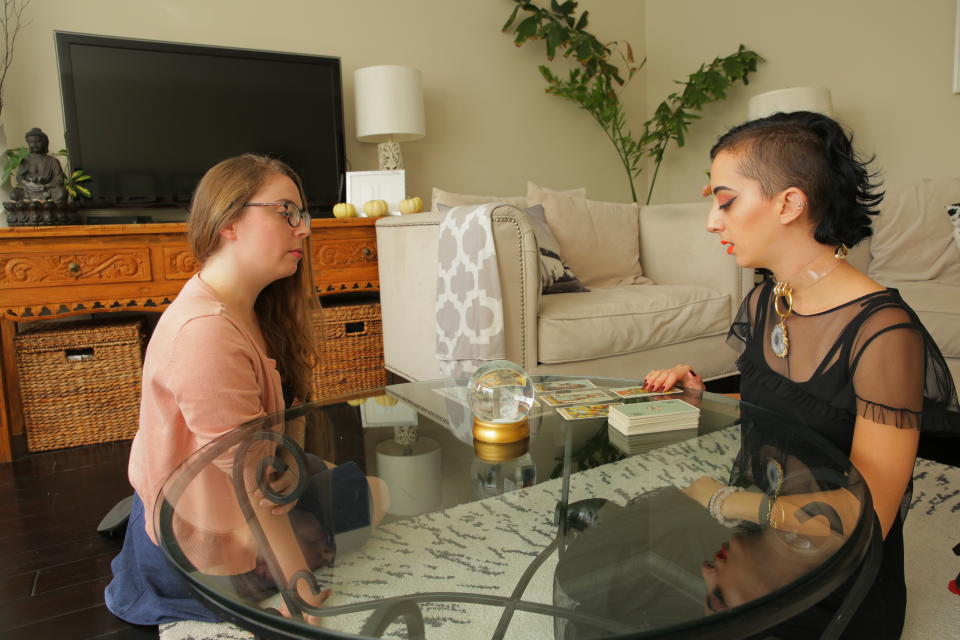
Gabriela’s Jewishness and Latinidad are separately important parts of her identity, but I ask if they ever influence her magick practices in small ways. “My spirituality connects me to myself, to my family, to my ancestors — not necessarily because of anything I do, but because of the intention of it,” she said. “I think when I’m doing a ritual, it’s more about honoring the energy of where I come from. I’m honoring the same thing my dad is when he does a Friday night service.” Gabriela also mentions that many of her Jewish ancestors lived in the mountains of Czechoslovakia, and posits that they likely engaged in folk magic and folklore of some kind. She describes including marigold in her rituals, a flower incorporated into altars for Día de los Muertos.
As often as Gabriela writes about spirituality, magick, and Latinx culture, she writes about fashion. After college, she interned for prestigious brands, including Vivienne Westwood. As a tween obsessed with America’s Next Top Model, she hoped to walk the runways. Eventually, her lifelong love for writing merged with her sartorial fascination, and she became a fashion writer. When you see Gabriela, you are immediately struck by her artistic style — an eclectic mix of power-clashing patterns, metallic textures, X-Files and Twilight Zone crop tops, and vintage pieces that are somehow still futuristic. She calls herself a fashion witch, after all. And like most passions in her life, her connection to fashion begins with her ancestry.
“My dad’s parents are Holocaust survivors, and my Grandma Rose was actually a writer, and she was a seamstress before she was sent to Auschwitz,” she said. Nazi guards brought Grandma Rose to the Head Seamstress, where they made guard and prisoner uniforms, as well as garments for the Nazi guards’ wives. She had been brought over by mistake, as she happened to share the same name as the Head Seamstress’s niece. Because of her sewing abilities, her grandmother was able to stay in the seamstress quarters, where she had a bed, food, and access to showers. She was eventually able to get her sister transferred to that camp so they could at least be together. After Grandma Rose’s eventual rescue, she met her husband, a master weaver. Grandma Rose has since passed on, and Gabriela says, “I feel very influenced by her and her work. I do what I do in honor of my family that’s not here.”
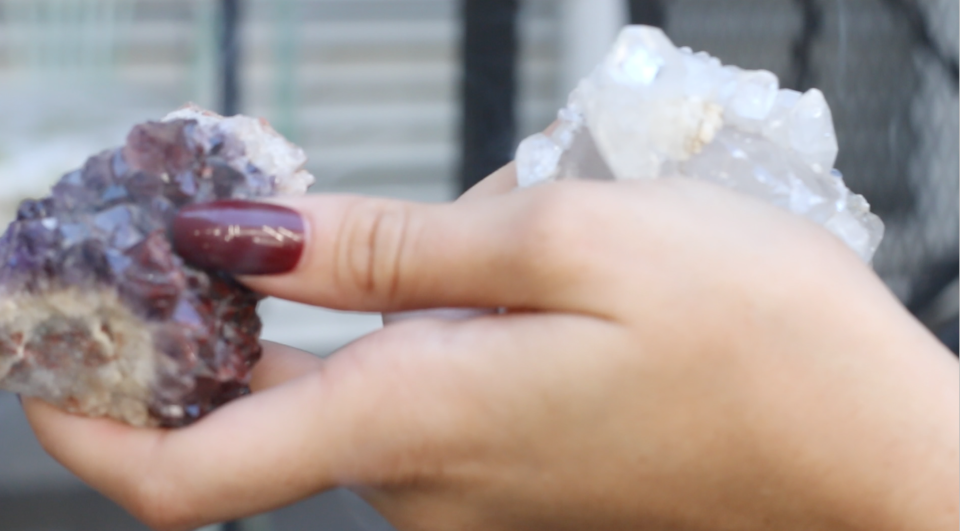
I ask what her mom has taught her about fashion and the power of femininity — especially considering the stories I’ve heard about her mother’s veritable glamour. “The way that my mom presents herself is very tied into being Latina. It’s a ritual for us to get up and put our lipstick on and do our eyebrows,” she said. “Not only is it time to ourselves, but it’s saying, ‘This is the filter I want to see myself through, and I’m forcing people to see me through that.’” Gabriela describes it as a way of reclaiming power. “I think my mom and her Mexican background were my first introduction to honoring myself through the ritual of putting on clothing and makeup.”
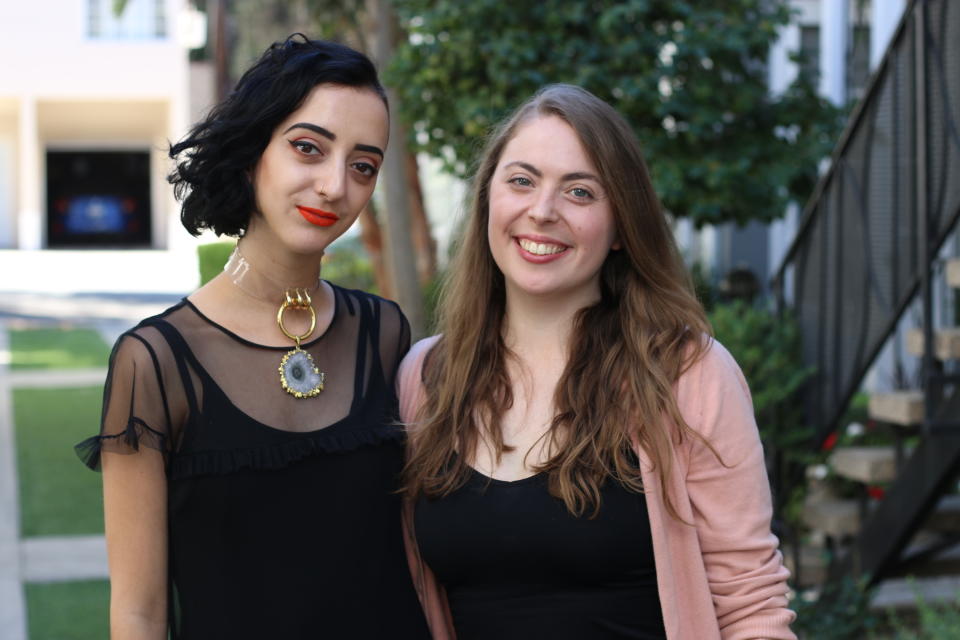
I ask Gabriela how her Latinx and Jewish backgrounds intersect. “If there’s one thing that overlaps between the cultures, it’s partying,” she told me, mentioning the time her Mexican uncle brought a flask of tequila to her Bat Mitzvah and all of the adults got drunk. “And being Jewish, we just constantly celebrate surviving because we’re still here when so many people have wanted us to die.”
And that inherited perseverance really sums up the work Gabriela wants to do, as a writer and as a human: “I have a lot of privilege,” she said. “If I come from a place where I have this voice, why wouldn’t I use it? …I’m honoring life because I shouldn’t be here — and I am.”

